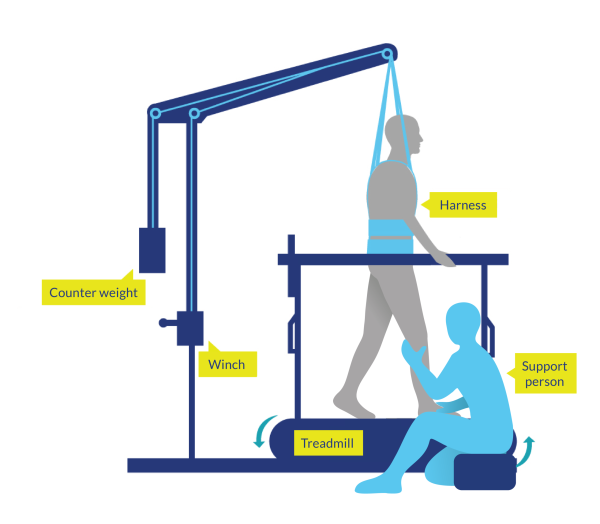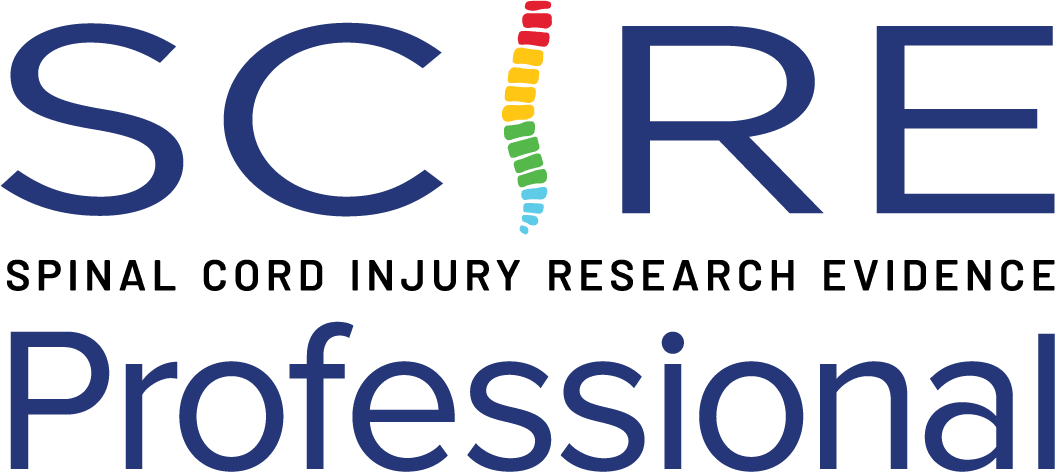Body-Weight Supported Treadmill Training (BWSTT)
Body-weight support treadmill training (BWSTT) was introduced years ago as a promising approach to improve walking function in people with SCI (Barbeau & Blunt 1991). In this approach, partial BWS is provided by a harness suspended from the ceiling or a frame, while limb stepping movements are assisted by a moving treadmill belt. Because body weight is partially supported, often with a harness attached to the ceiling or a supported beam, walking can be practiced safely even when a person cannot stand or walk independently (SCIRE Community, 2017). Body-weight-support walking training can before patients have developed appropriate motor control, and as well as with better safety and less fear of falling (El Semary & Daker 2019). It is believed that locomotor circuitries within the spinal cord below the level of injury can be activated by repetitive and intensive LT, which provides appropriate afferent feedback (Rossignol et al. 2011). Currently, LT with a body-weight-support system is among the most widely used rehabilitation strategies to retrain standing and walking abilities after SCI (Yu et al. 2019).
In a systematic review and meta-analysis, Duan et al. (2021) compared the benefits of different interventions to affect walking ability/lower limb function in people with SCI. Results show that robotic-assisted treadmill training did not increase walking speed (10MWT) or walking distance (6MWT) better or worse than control (no intervention, bike, and overground walking); however, robotic-assisted treadmill training significantly increased ASIA LEMS score and lower extremity independence (Duan et al. 2021).
In this review, we focus on the BWSTT intervention studies (including RAGT interventions, mainly using Lokomat) that report functional ambulation (such as walking speed or endurance), and strength-related outcome measures (such as LEMS). These studies tend to focus on people with motor-incomplete SCI lesions, but some more recent studies have included patients with AIS A level injuries (Çinar et al. 2021; Çinar et al. 2020; Jansen et al. 2017b; Okawara et al. 2020; Sawada et al. 2021; Yildirim et al. 2019). For the purposes of this review, we defined SCI <12 months post-injury as acute/sub-acute and SCI >12 months post-injury as chronic.

